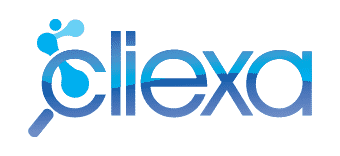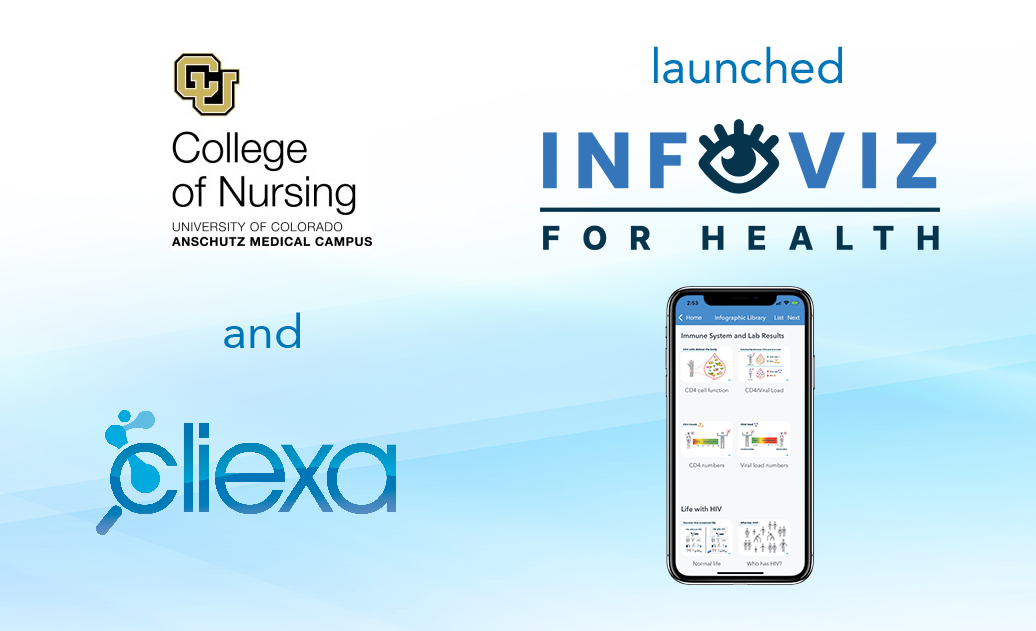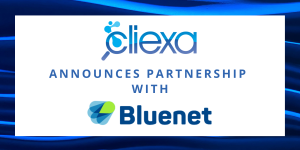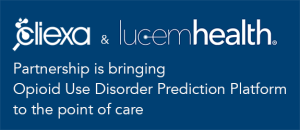University of Colorado College of Nursing Partners with cliexa to Launch a Mobile Application with Evidence-based Infographics
HIV disproportionately affects Latinos who experience higher prevalence, faster disease progression, more HIV-related deaths, and a marked delay in diagnosis and treatment than their white counterparts. This is a concern in geographic regions across the United States (US) as Latinos comprise the largest minority group in the US. Similar HIV-related health disparities exist in developing countries, such as the Dominican Republic (DR), where those with low socioeconomic status experience higher disease burdens and worse outcomes than those with higher socioeconomic status. These health disparities are exacerbated when affected individuals have low health literacy and are unable to understand the information needed for self-management, as inability to self-manage leads to less use of healthcare services and worse understanding of illness, health behaviors, and health outcomes. Therefore, to improve health outcomes and reduce health disparities among Latino persons living with HIV (PLWH), clinicians must provide the health information needed for effective self-management to diverse Latino PLWH in a meaningful way.
In response to these concerns, Dr. Samantha Stonbraker, Assistant Professor at the University of Colorado College of Nursing, rigorously and iteratively developed the Info Viz for Health intervention to assist clinicians to provide this health information to PLWH through several NIH-funded studies. She first identified a need for this intervention (T32 NR013454).1-3 Then, she worked with an expert visualization team at Columbia University in New York and with health care providers and PLWH at a clinic in the Dominican Republic to develop a set of culturally relevant and evidence-based infographics to assist clinical communication (T32 NR007969).4, 5 She has since assessed the feasibility of using the Info Viz for Health intervention to improve clinical communication with, and outcomes of, PLWH in the DR.6, 7 She also adapted infographics to the cultural and clinical context of Latino PLWH living in New York (NY), who are mainly of Dominican origin/descent and also assessed their feasibility and acceptability at a clinic specializing in HIV care in Northern Manhattan (K99 NR017829).
Two critical next steps in this work were:
- To adapt Info Viz for Health for relevance to heterogeneous Latino populations across the US by adapting them to Latinos of Mexican origin/descent as these individuals form the largest Latino group in the US and their inclusion is necessary to enhance generalizability and enable future scalability of the intervention. To do this, Dr. Stonbraker conducted a series of in-depth interviews with PLWH attending a clinic that specializes in HIV care in Denver, CO, and adapted the infographics accordingly.
- To integrate the Info Viz for Health infographics into a mobile platform to enable ease of use and scalability. Dr. Stonbraker teamed up with cliexa, an innovative company that develops and creates digital health solutions. Together, they incorporated the Info Viz for Health into a mobile app that is now accessible on the App Stores both in Apple and Google in English and Spanish languages.
Currently, Dr. Stonbraker is conducting a multi-site randomized controlled trial (RCT) to evaluate the efficacy of using the Info Viz for Health app to improve clinical communication and treatment outcomes of Latino PLWH at clinical sites in CO and the DR. Seven providers at the two different clinical sites are using the Info Viz for Health app as a communication aid while they provide information to study participants.
The research aims of this project are to:
Aim 1 Assess the efficacy of the intervention as compared to standard care in improving treatment outcomes (CD4 count, viral load, self-efficacy to manage HIV, among others) of PLWH and determine how resultant effects vary over time (baseline to 9-months) and between sites.
Aim 2 Evaluate the feasibility, acceptability, and usability of the app among interdisciplinary and multi-cultural providers using the app.
Aim 3 Identify implementation factors of integrating the mobile app into electronic health records (HER) through in-depth interviews and leverage findings to ensure the app effectively interfaces with EHRs in the US and DR.
Next steps:
- Health care providers at all sites where infographics have been used have requested additional infographics be incorporated into the app so that they can address additional topics with their patients. Dr. Stonbraker will conduct a needs assessment to identify the pertinent topics to include next and will create rigorously designed and culturally appropriate infographics in response to identified needs.
- The Info Viz for Health app is provider-facing and would benefit from integration with EHRs. Therefore, the next step in app development is to integrate it with Fast Healthcare Interoperability Resources (FHIR)®, which is the standard for connecting mobile apps and electronic health records (EHR). This permits scalability, as the resultant app enables clinicians to easily access evidence-based infographics from diverse settings globally.
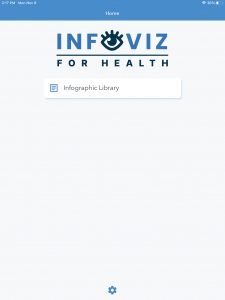
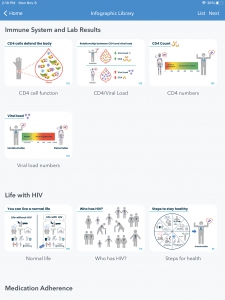
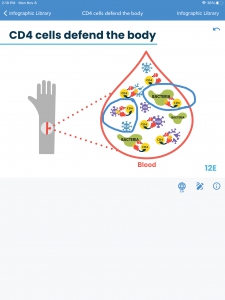
The final product will be an app that interfaces with EHRs in resourced and under-resourced areas globally, has been rigorously tested amongst diverse Latino PLWH in distinct geographic settings in multiple languages, and includes evidence-based infographics to facilitate the clinical communication that helps patients improve their self-management and obtain better health.
References
- Stonbraker S, Smaldone A, Luft H, et al. Associations between health literacy, HIV-related knowledge, and information behavior among persons living with HIV in the Dominican Republic. Public Health Nurs. 2017;35(3):166-175. doi:10.1111/phn.12382
- Stonbraker S, Befus M, Lerebours Nadal L, Halpern M, Larson E. Factors associated with health information seeking, processing, and use among HIV positive adults in the Dominican Republic. AIDS Behav. 2016;21(6):1588–1600. doi:10.1007/s10461-016-1569-5
- Stonbraker S, Larson E. Health-information needs of HIV-positive adults in Latin America and the Caribbean: an integrative review of the literature. AIDS Care. 2016;28(10):1223-1229. doi:10.1080/09540121.2016.1173645
- Stonbraker S, Halpern M, Bakken S, Schnall R. Special Section on Visual Analytics in Healthcare: Developing infographics to facilitate HIV-related patient-provider communication in a limited-resource setting. Appl Clin Inform. 2019;10:597-609. doi:10.1055/s-0039-1694001
- Stonbraker S, Richards SD, Halpern M, Bakken S, Schnall R. Priority topics for health education to support HIV self-management in limited-resource settings. J Nurs Scholarsh. 2019;51(2):168-177. doi:10.1111/jnu.12448
- Stonbraker S, Flynn G, George M, et al. Feasibility and acceptability of using information visualizations to improve HIV-related communication in a limited-resource setting: A short report. AIDS Care. In Press;doi:10.1080/09540121.2021.1883517
- Stonbraker S, Liu J, Sanabria G, et al. Clinician Use of HIV-Related Infographics During Clinic Visits in the Dominican Republic is Associated with Lower Viral Load and Other Improvements in Health Outcomes. AIDS Behav. In Press:1-13. doi:10.1007/s10461-021-03331-8
